Have you ever wondered about the secret ingredient that gives traditional Japanese sushi its distinctive flavor?
The art of sushi-making goes beyond raw fish and seaweed wraps; it’s a meticulous craft that has been honed over centuries.
But did you know that there’s a key element that contributes significantly to the taste profile of sushi?
Let’s uncover this hidden gem and explore how it transforms a simple dish into an exquisite culinary experience that will tantalize your taste buds.
Just The Basics
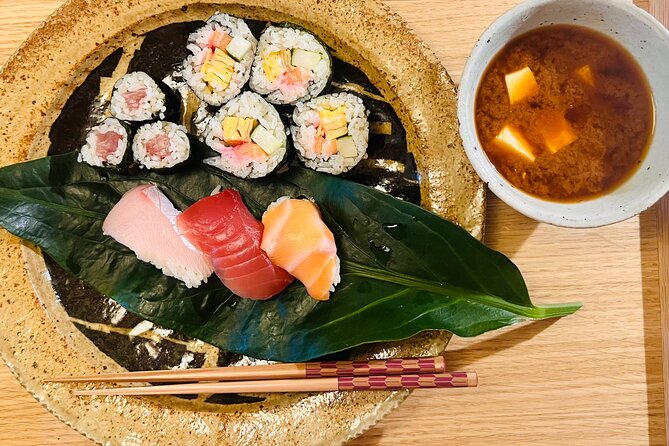
- Sushi origins blend preservation with refined techniques, enriching cultural culinary heritage.
- Authentic sushi hinges on quality rice, precise rolling, and fresh ingredients for a harmonious experience.
- Mastering sushi rice balance and seasoning is pivotal for a flavorful and textured dining delight.
- Knife skills and meticulous presentation elevate sushi to an art form, enticing both visually and gastronomically.
Here's some other great tours and experiences nearby we think you'll like.
Origins of Traditional Japanese Sushi
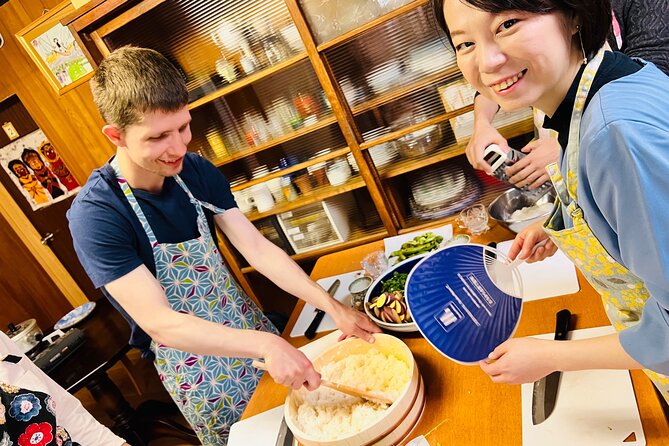
Japanese sushi, with its roots dating back centuries, has evolved into a beloved culinary tradition known for its fresh ingredients and meticulous preparation techniques. The history of sushi is a fascinating tale of innovation and cultural significance.
Originally a way to preserve fish in fermented rice, sushi has transformed over time into the delicacy we know today. Techniques like hand-pressing the perfect rice ball and slicing fish with precision have been honed through generations of sushi chefs. The evolution of sushi mirrors Japan’s own journey through time, adapting to changing tastes and culinary trends while staying true to its traditional roots.
Understanding the origins of traditional Japanese sushi provides a deeper appreciation for the artistry and skill behind this iconic dish.
Essential Ingredients for Authentic Sushi
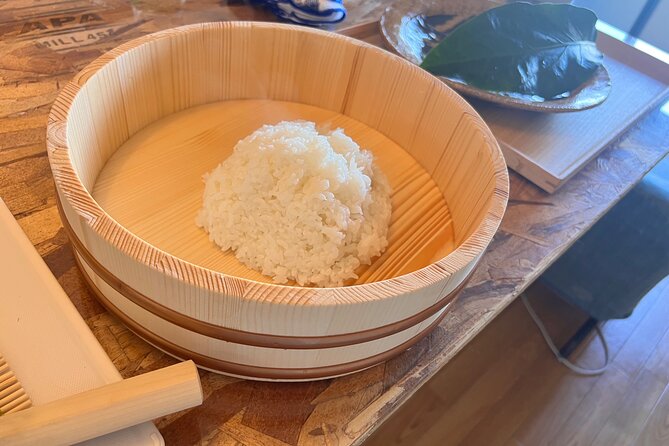
Venturing into the realm of traditional Japanese sushi, one quickly realizes that the key to crafting an authentic sushi experience lies in the careful selection of fresh and high-quality ingredients. When it comes to authentic sushi, two essential components that play a vital role are the variety of sushi rice used and the precise sushi rolling techniques employed. Here’s a snapshot of these crucial elements:
| Sushi Rice Varieties | Sushi Rolling Techniques |
|---|---|
| Short-grain Japonica rice | Maki (roll) sushi technique |
| Medium-grain Calrose rice | Nigiri (hand-pressed) sushi technique |
| Sticky glutinous rice | Temaki (hand roll) sushi technique |
| Seasoned sushi rice | Uramaki (inside-out roll) sushi technique |
Understanding and mastering the harmony between these key ingredients and techniques is fundamental to achieving an authentic and delicious sushi experience.
Art of Sushi Rice Preparation
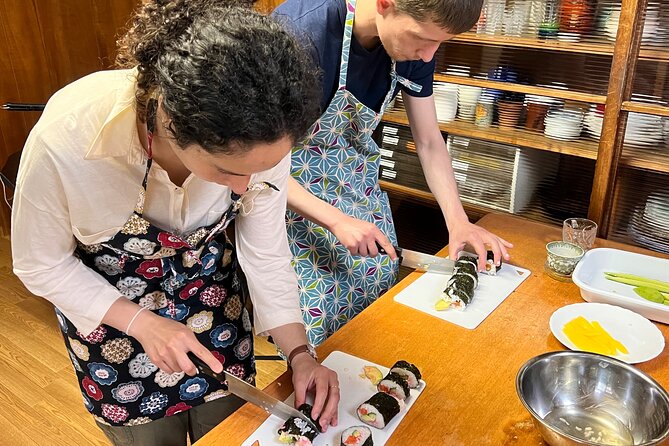
To perfect the art of sushi rice preparation, one must focus on achieving the ideal balance of seasoning and texture in each grain. The rice texture plays a crucial role in the overall sushi experience, as it should be sticky enough to hold together but still retain individuality. Achieving this delicate balance involves rinsing the rice thoroughly to remove excess starch before cooking.
Seasoning techniques are equally important, with a mixture of rice vinegar, sugar, and salt gently folded into the cooked rice while fanning to help it absorb the flavors. This step is crucial in giving the rice its signature taste that complements the fresh fish or other toppings. Mastering these techniques ensures that every sushi bite is a harmonious blend of flavors and textures.
Mastery of Sushi Knife Skills
Sharpening your sushi knife skills can elevate your culinary expertise and presentation to new heights. Mastering sushi knife techniques and sharpening is crucial for creating those perfect slices of sashimi.
Here are some key points to consider:
- Proper grip and hand positioning are essential for precise cuts.
- Regular sharpening of the sushi knife maintains its edge for clean slicing.
- Cleaning and drying the knife immediately after use prevents rust and maintains sharpness.
- Storing the knife in a protective sheath or on a magnetic strip helps maintain its quality.
Types of Sushi and Presentation
Curious about the diverse range of sushi types and how to present them in an appealing manner? When it comes to sushi, presentation is key. Sushi plating is an art form, with chefs carefully arranging each piece to entice both the eyes and the taste buds. From classic nigiri to extravagant maki rolls, there are various types of sushi to explore.
Plus, sushi garnishes such as wasabi, pickled ginger, and soy sauce play a crucial role in enhancing the overall dining experience. To elevate your sushi presentation, consider using colorful garnishes and arranging the sushi pieces in an aesthetically pleasing manner. Remember, the way sushi looks is just as important as how it tastes!
Sushi Etiquette and Dining Customs
When enjoying a Japanese sushi culinary experience, it’s important to familiarize yourself with the proper sushi etiquette and dining customs to fully appreciate the meal. Here are some key points to keep in mind:
-
Sushi Serving:
-
Use chopsticks or your hands to eat sushi, but never stab it with chopsticks.
-
Table Manners:
-
Don’t mix wasabi into your soy sauce; it’s meant to be brushed onto the fish.
-
Respect the Chef:
-
If sitting at a sushi bar, it’s polite to greet the chef and thank them after the meal.
-
Eating Order:
-
Sushi should be eaten in one bite to fully savor the flavors.
Frequently Asked Questions

Can Children Participate in the Traditional Japanese Sushi Culinary Experience?
Children can typically participate in cultural learning experiences. It’s a great way for them to explore new tastes and traditions. These activities often offer hands-on opportunities for kids to engage and learn.
Are There Any Specific Dress Code Requirements for the Sushi Culinary Class?
There are no specific dress code requirements for the sushi culinary class. However, participants are encouraged to wear comfortable attire. It is essential to follow class etiquette and respect cultural customs during the experience.
Is There an Age Limit for Participants in the Sushi Culinary Experience?
Age restrictions apply to ensure safety and maximize culture. Participants need basic culinary skills for this educational experience. The activity isn’t suitable for very young children. The class enhances appreciation of Japanese culinary traditions.
Are There Any Specific Dietary Restrictions That Can Be Accommodated During the Sushi Culinary Class?
For specific allergies, they can make accommodations. They also offer vegetarian options. The class is not suitable for wheelchair users. Infants should sit on laps. Pregnant travelers are advised against participating. Cancellations allowed 24 hours prior.
Is There a Minimum Number of Participants Required for the Sushi Culinary Experience to Take Place?
For private events or solo bookings, the sushi culinary experience has no minimum participants required. This allows flexibility for intimate sessions. Group discounts and team building opportunities may be available upon inquiry, ensuring a personalized and engaging experience.
Final Words
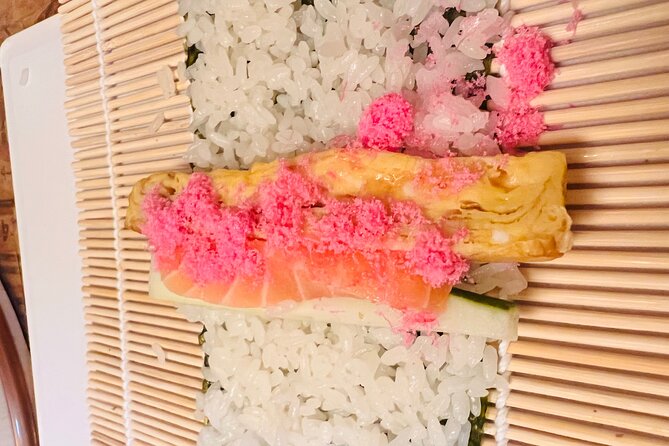
The Traditional Japanese Sushi Culinary Experience offers a fun and educational way to explore the world of sushi-making. From learning about the origins of sushi to mastering essential techniques, participants can gain valuable insights into this beloved cuisine.
With expert guidance and hands-on practice, you’ll be well on your way to creating delicious and authentic sushi at home. So grab your chopsticks and get ready to impress your friends and family with your newfound sushi skills!
